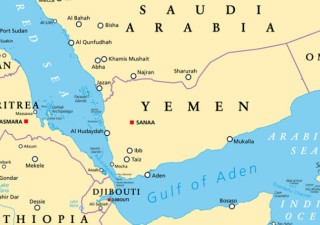MENAP: case law in IP procedures
13 December 2023

The United States Patent and Trademark Office (USPTO) is the world’s oldest patent office, established in 1790. It is no wonder, then, that after more than two centuries of practice, it has valuable guidelines in place for its examiners. These briefs prove to be a great benefit to examiners and applicants alike, so should this model be adopted in the Middle East, North Africa and Pakistan (MENAP) region?
We will examine this question and many others regarding the interaction of intellectual property (IP) procedures with local legislation and case law.
Should office guidelines, decisions and case law be published?
Nowadays, the USPTO’s whole procedure is available to the public online. Many other offices, including the European Patent Office (EPO) and the European Union Intellectual Property Office (EUIPO), follow the trend of sharing their internal examination rules. This policy holds obvious benefits: Clearly defined rules increase predictability, reduce office actions and, consequently, decrease prosecution costs and times. While guidelines undoubtedly offer useful answers to standard questions, they are not intended to be applied single-mindedly. In other words, they do not substitute a deeper case-by-case analysis of patent or trademark applications but offer a convenient tool to simplify the examination procedure on both sides of the desk.
Despite the advantages, many IP offices do not publish such guidelines, particularly in the MENAP region. This may be due to the fact that the respective offices never formally codified their rules in the first place. Or, if they have been prepared, an office may choose not to publish their rules to discourage attempts at circumvention. Be this as it may, unless agents exchange their experiences between themselves, office practice remains widely and, regrettably, obscured. Such a secretive attitude has the effect of granting a single examiner much more agency than his counterparts in the northern hemisphere, in turn making it more difficult for applicants to comply with all requirements ex ante. By the same token, it would be greatly beneficial to have examiners available to discuss their objections by phone – a successfully applied routine in many jurisdictions.
More often than not, motivated office decisions (grants or refusals) are not published, including those of the boards of appeal and the courts. In some cases, only the decisions are made known, divorced from their reasoning, e.g., “novelty: no” or “likelihood of confusion: yes.” Again, comprehensive publications would be an intuitive means to understand the current attitude of the authorities toward common filing questions, for instance, those regarding subject matter eligibility, the formulation of claims and rules on the likelihood of confusion.
Thankfully, the digital age makes satisfying these wants more feasible than ever. It is not outlandish to presume that the ease of electronic document processing and the demand from the domestic and foreign business community for legal predictability will induce more patent and trademark offices (PTOs) and courts to publish their internal guidelines and decisions.
Should applicants/associations have input in drafting IP laws?
Looking at practice in the Old and New Worlds over the last 10 years, one can see that Nordic legislators usually invite all stakeholders to comment on suggested law amendments at an early stage. Similar deliberations take place at the international level, e.g., at the World Intellectual Property Organization (WIPO) in Geneva, where all nations concerned discuss proposed changes and their impacts together with the main non-governmental organizations (NGOs) despite the fact the latter cannot vote.
The same is observed regionally, e.g., at the EU Commission in Brussels, where an ear is lent to the experts and addressees of new rules, as well as within national governments during hearings on the pros and cons of any imminent reforms. To cite a national example, the Ministry of Finance of the UAE recently called for public consultation on the new Federal Corporate Tax. At the same time, the country’s PTO routinely holds meetings with agents to pre-discuss amendments. In other MENAP instances, draft amendments are outsourced to vetted law firms. Of course, this does not approximate an external debate and may even lead to conflicts of interest if those firms have clients who will be affected by the proposed law.
On the other hand, these divulgation exercises do not impinge upon the sovereignty delegated to decision-makers as the stakeholders’ recommendations are not binding. What they do is offer an excellent opportunity to learn from practitioners about essential, and perhaps underappreciated, aspects and effects of the amendments at hand. Such debates are rarely further extended to the public and not necessarily at the initiator's choice.
It follows that expert discussions allow lawmakers to view the relevant arguments from different angles and should, therefore, ensure a more balanced legal change.
Should specialized IP courts be established?
In countries where IP litigation is not the judges’ bread and butter, concentrating on fewer or even only one court would improve focus and, in the end, lead to a more streamlined system. It may be conversely argued that a dedicated IP court would disadvantage parties located far away. However, apart from the fact that IP litigation is still the exception rather than the rule in the MENAP context, locational issues could be mitigated by written procedures and online hearings. It is more important that judges get acquainted with the particularities of IP – be it patents, trademarks or copyrights – to render just decisions swiftly rather than avoid travel.
Another issue is that judges often rely on externally appointed IP experts to advise on technical and legal questions, leading to prolonged trials and significantly increased costs. With more well-versed judges and technical panels, such complications could slowly be done away with to benefit litigants. An example of this tendency in action is a recent UAE IP law that introduced one judge and two IP experts to the Grievance Committee.
In the end, only time will tell if the example set by other offices will be taken up in the MENAP region for the sake of procedural efficiency.







